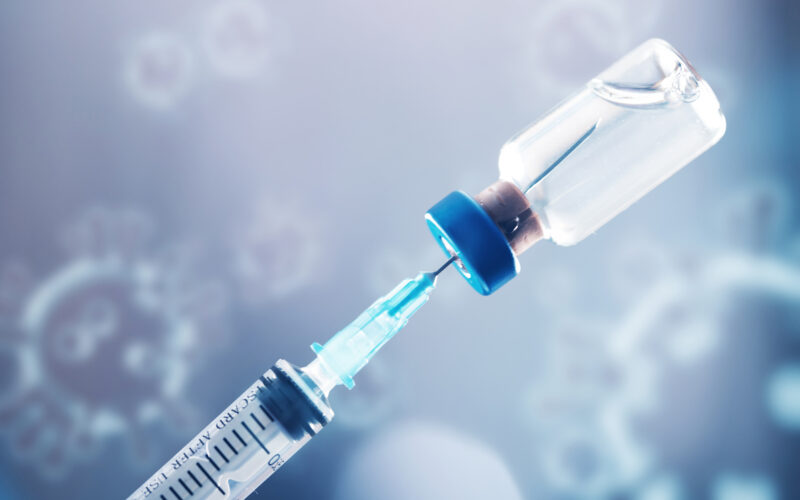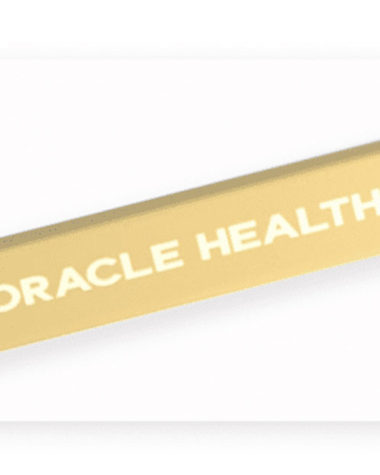VivoSim Labs Inc. (NASDAQ:VIVS) is an emerging biotechnology company pioneering the next generation of non-animal, simulation-based testing solutions designed to transform preclinical drug development. Headquartered in the United States, VivoSim operates at the intersection of biotechnology, artificial intelligence, and computational modeling, with a mission to redefine how pharmaceutical safety and efficacy are evaluated. The company’s proprietary technologies integrate human-derived tissue models and AI-driven analytics to deliver more predictive and ethical alternatives to traditional animal testing. This approach aligns with global regulatory movements, including the FDA Modernization Act 2.0, which encourages the adoption of advanced non-animal methodologies for drug testing and approval.
Founded by a team of scientists, bioengineers, and data specialists, VivoSim Labs was built around a central belief—that biological realism and computational precision can coalesce to accelerate safe drug discovery. Its proprietary NAMkind™ and VivoModel™ platforms simulate human organ and tissue responses in silico, providing drug developers with powerful insights into toxicity, metabolism, and disease mechanisms without relying on animal subjects. These models replicate human biological systems at molecular and cellular levels, drastically reducing both cost and time in the preclinical testing process while improving accuracy and reproducibility.
The company’s core focus areas include liver and intestinal toxicology, two of the most critical pathways in early-stage drug failure. By leveraging high-fidelity human tissue models and AI-guided simulations, VivoSim offers pharmaceutical and biotechnology companies an opportunity to identify safety issues earlier in the development cycle. This capability significantly decreases late-stage attrition rates, which remain one of the most expensive challenges in drug R&D. Moreover, VivoSim’s technology enables predictive modeling for compound behavior, providing actionable insights that guide formulation decisions and clinical trial design.
Financially, VivoSim Labs represents a high-potential micro-cap with a current market capitalization of approximately $5.8 million and a gross margin exceeding 97%. Although its revenue base remains modest, the company maintains a healthy balance sheet with a strong current ratio above 4.5, supported by cash reserves of more than $9 million. This financial flexibility allows VivoSim to continue developing and validating its technologies while positioning for strategic partnerships and licensing opportunities within the biotech and pharmaceutical sectors. The company’s low debt profile and disciplined capital management further reflect a long-term vision focused on scientific advancement rather than short-term market speculation.
VivoSim’s emergence comes at a pivotal moment in the biotechnology industry, as global demand intensifies for predictive, ethical, and scalable alternatives to animal testing. The company’s innovative convergence of AI-driven biological modeling and human-based organoid testing has positioned it as a potential leader in a multi-billion-dollar market for preclinical simulation technologies. With governments, regulatory bodies, and pharmaceutical firms increasingly seeking validated non-animal methodologies, VivoSim’s offerings address both scientific and ethical imperatives shaping the future of drug development.
As the biotechnology sector continues its shift toward automation, data-driven discovery, and precision medicine, VivoSim Labs stands out as one of the few companies capable of bridging biological realism with digital scalability. By combining computational biology, advanced analytics, and experimental validation, the company is not merely modernizing preclinical testing—it is helping to usher in a new era of intelligent drug development. VivoSim’s pioneering work in predictive toxicology and organ simulation underscores its broader mission: to create a safer, faster, and more ethical pathway to pharmaceutical innovation.
VivoSim Labs Inc. (NASDAQ:VIVS) has once again captured market attention, soaring 19.78% in a single trading session following a wave of speculation surrounding clinical and technological advancements. For a company valued at just a few million dollars in market capitalization, such a move isn’t unusual—but this latest rally has a distinctly different tone. With whispers of new partnerships, rumors of Web3 integrations, and momentum-driven trading, VivoSim Labs has transitioned from an obscure biotech to one of the most watched micro-caps on the NASDAQ. But beneath the trading hype lies a story of innovation, survival, and strategic positioning that could reshape how this tiny biotech approaches the future of clinical testing.
Financial Overview: Weak Revenues, Strong Balance Sheet
Despite its market excitement, VivoSim Labs remains a classic case of financial paradox. The company’s latest financials revealed a gross margin of 97.9%, signaling operational efficiency at the core level. Yet, this is offset by a net loss of $2.84 million and total expenses nearing $2.95 million. Revenue remains meager at just $37,000, an amount that would barely cover the utility bills of a mid-sized biotech lab. However, the firm maintains a current ratio of 4.6, a crucial metric reflecting short-term liquidity strength, and cash reserves around $9.1 million, ensuring it can sustain research and operational runway for several quarters without resorting to heavy debt.
VivoSim also raised $1.81 million via share issuance, a decision viewed by analysts as defensive but necessary to bolster its working capital amid high burn rates. While such moves often dilute shareholder value in the short term, they reflect a cautious and calculated approach to sustaining innovation in a capital-intensive sector. For early investors, the bet hinges not on quarterly profitability but on whether VivoSim can convert its scientific promise into tangible, monetizable progress.

CHECK THIS OUT: Corcept (CORT) Skyrockets 1,534% in 10 Years and Immuneering (IMRX) Reports 86% 9-Month Survival in Pancreatic Cancer.
Analyzing Key Financial Metrics: Reality Check Amid the Hype
VivoSim’s fundamentals paint a complex picture. The company’s return on equity stands at -67.51%, a red flag typical for pre-commercial biotech firms. Asset turnover remains near zero, underscoring underutilization of assets relative to revenue generation. Yet, the debt-to-equity ratio of 1.3 signals a relatively healthy balance sheet free from excessive leverage. These figures indicate that VivoSim is structurally stable but operationally inefficient—a balance that, while risky, provides breathing room for long-term innovation.
The mixed financials haven’t deterred speculative enthusiasm. The stock’s price oscillations between $2.10 and $2.35 over recent sessions reflect both trading volatility and investor optimism. For short-term traders, this volatility represents a fertile playground; for long-term believers, it hints at accumulation phases preceding a potential breakout.
Market Behavior and Investor Psychology
VivoSim Labs stock has become a magnet for active traders, mirroring the psychology of high-volatility small caps. The 19.78% intraday spike wasn’t driven by fundamentals alone—it was fueled by social sentiment, online chatter, and algorithmic trading patterns that thrive on speculative catalysts. These price jumps often occur when low-float stocks intersect with momentum trading, amplifying modest news into major price movements.
However, what differentiates VivoSim from most speculative penny stocks is its narrative of scientific relevance. The company’s advancements in clinical modeling and AI-driven simulation technology have garnered attention not just from traders but also from research analysts tracking next-gen drug testing models. In an era where biotech innovation is merging with computational biology and simulation, VivoSim’s hybrid identity between a biotech and a data science firm positions it uniquely for future relevance.
Rumors, Partnerships, and Potential Catalysts
Adding fuel to the rally are unconfirmed reports of partnership talks with a leading gaming and simulation studio—a cross-sector collaboration that could integrate VivoSim’s simulation tools into training or visualization platforms. While speculative, such partnerships could unlock new commercial channels beyond drug testing, including academic research and digital twin modeling for pharmaceutical training.
The company’s earlier hints about expanding its proprietary VivoModel™ simulation framework have further stoked investor interest. Insiders suggest the firm may be developing AI modules capable of predicting drug efficacy and toxicity without relying solely on traditional wet-lab models. If successful, this could position VivoSim as a disruptor in the multi-billion-dollar pre-clinical research market, a sector currently dominated by firms that rely heavily on animal testing.
Trading Patterns: Between Opportunity and Illusion
From a trading perspective, VIVS behaves like a momentum-driven stock—sharp spikes followed by quick retracements. Day traders thrive on these cycles, capitalizing on volatility while long-term investors debate the sustainability of the moves. As Tim Sykes famously says, “It’s not about how much money you make; it’s about how much money you keep.” The quote is particularly apt here: VIVS rewards agility but punishes complacency.
Historical data shows similar high-amplitude movements following speculative press releases or market rumors. Each wave brings new investors seeking quick profits, yet the underlying trend continues to build higher lows—often a bullish sign for micro-cap stocks entering a new growth phase.
Strategic Positioning for Future Growth
While financials remain weak, VivoSim’s strategic cash position and low debt profile offer the flexibility to pivot aggressively toward new research or partnerships. With $9.1 million in cash reserves, the company has room to refine its simulation models, expand commercial pilots, or even pursue regulatory validation—key steps in becoming a recognized player in non-animal testing and AI-powered biotech simulation.
In a post-animal-testing era, where the FDA Modernization Act 2.0 encourages alternative pre-clinical testing models, VivoSim could find itself perfectly aligned with regulatory and ethical trends reshaping the biotech industry. The firm’s commitment to building next-gen biological simulation frameworks could make it a strategic acquisition target for larger biotech or pharma players seeking to enhance their predictive modeling capabilities.
Investor Takeaway: Volatile But Visionary
VivoSim Labs is not for the faint of heart. With a micro-cap valuation, minimal revenue, and negative profitability, it fits the archetype of a high-risk, high-reward biotech. Yet, its strong cash position, high gross margins, and strategic pivot toward computational biology make it far from an ordinary penny stock. The 19.78% price surge might reflect speculation today, but the long-term narrative hints at disruptive potential.
If VivoSim successfully translates its AI-driven clinical simulation models into validated, commercialized tools, its $5–6 million market capitalization could represent a deep-value entry point into a company operating at the frontier of biotech and digital simulation. For investors attuned to speculative growth stories, VIVS offers a window into the future of virtual clinical testing—an area poised for exponential adoption.
READ ALSO: Tiziana (TLSA) Surges 143% in 2025 and Immuneering (IMRX) Reports 86% 9-Month Survival in Pancreatic Cancer.








